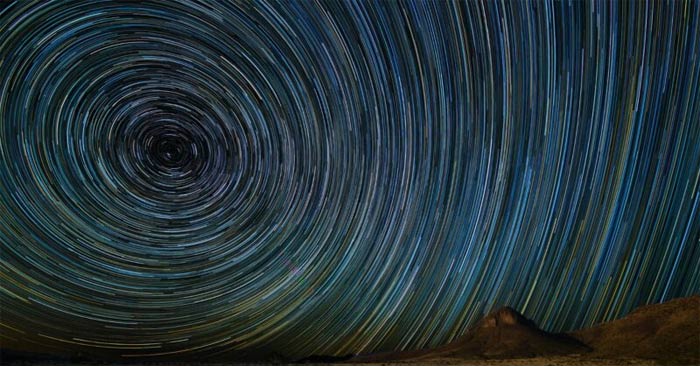Does the North Star ever move across the sky?
The North Star, also known as Polaris, appears to be fixed in the northern sky. It marks the celestial north pole, or north pole, the point around which the entire northern sky—full of stars—revolves. That's why you can always use the North Star to find north.

Even though the Big Dipper appears to be stationary, it actually moves. The Big Dipper is a symbol of constancy. But, a video shows that the Big Dipper makes its own little circle around the north pole of the sky every day. That's because the Big Dipper is slightly off course — about 0.65 degrees — from the celestial north pole. So the constellation makes a circle about 1.3 degrees in diameter every day. When it's closest to the celestial north pole in about 100 years, at a distance of just 0.45 degrees, it makes a daily circle of just 0.90 degrees.
Where does this movement come from? It comes from the rotation of the Earth. The Earth rotates across the sky once a day, and that rotation causes the sun during the day — and the stars at night — to rise in the east and set in the west. But Polaris is a special case. Because it lies almost exactly above the Earth's north axis, it, like the axis of a wheel, neither rises nor sets. Instead, it appears to stand still in the northern sky.
Altitude of the North Star
Not only does the North Star point north, but its elevation in the northern sky also matches your latitude on Earth. If you are sailing in the Caribbean at 16° north latitude, the North Star will be about 16° high in your sky. If you are sailing around Nova Scotia, at 44° north latitude, the North Star will be about 44° high in your northern sky. Each degree north or south is 69 miles (111 km), so traveling 690 miles north or south changes your latitude and the North Star's elevation by 10 degrees.

Take turns being the Big Dipper
A movement of the Earth called precession causes our axis to trace an imaginary circle across the celestial sphere every 26,000 years. Thousands of years ago, when the pyramids rose from the sands of ancient Egypt, the North Star was an inconspicuous star called Thuban in the constellation Draco the Dragon. Twelve thousand years ago, the blue-white star Vega in the constellation Lyra the Harp would have been a much brighter North Star than the current North Star.
Polaris can be the name of any of the North Stars. The current North Star was once called Phoenice. It is the 49th brightest star in the sky. It is not known for its brightness, but for its unique position in the sky.

Proper motion
Polaris – like all stars – has more than one kind of motion. The stars we see in the night sky are all members of the Milky Way galaxy. They all move through space, but they are so far away that we can't easily see them moving relative to each other. That's why the stars appear to be fixed to each other. And that's why most of us see the same constellations as our ancestors.
But over time, this movement, called proper motion, rearranges the patterns of each star we see in the sky. For Polaris, that movement is tiny, about 46 arc seconds in 1,000 years. That's about 1/40th the diameter of the full moon as seen from Earth. So when you talk about moving or fixed stars, remember… they're all moving in the vastness of space. It's just that the relatively short time span of human lifespans prevents us from seeing this large movement.
You should read it
- Which star lives the longest, brightest, biggest, ... in the universe?
- Why is North always at the top on maps?
- Vsmart Star 3: Snapdragon 215, dual camera, 3500mAh battery, priced at 1.79 million
- Close up of the star is said to be a giant structure of aliens
- 13 interesting facts about Korea can be unknown
- Google accounts for 25% of North American Internet traffic
 Discovery of an ancient spiral galaxy dubbed the 'monster' of the universe
Discovery of an ancient spiral galaxy dubbed the 'monster' of the universe Scientists explain why Mars has a red surface
Scientists explain why Mars has a red surface Admire the rare brilliant light show on Jupiter
Admire the rare brilliant light show on Jupiter The moment a wandering black hole 'swallows' a star
The moment a wandering black hole 'swallows' a star See the 'cosmic masterpiece' created by a star nearing the end of its life
See the 'cosmic masterpiece' created by a star nearing the end of its life James Webb telescope captures stunning cosmic hourglass moment
James Webb telescope captures stunning cosmic hourglass moment